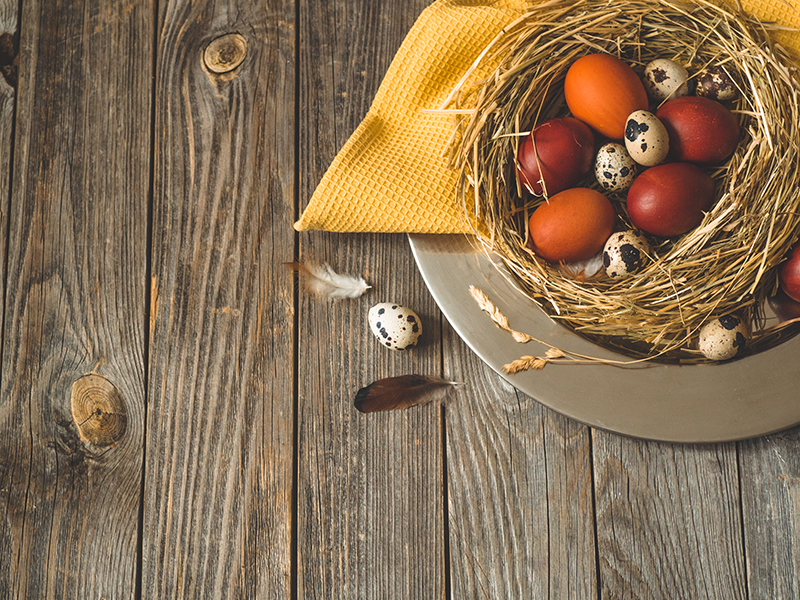 Easter Sunday, the first Sunday after Easter, marks the end of Holy Easter Week and the beginning of farming work. It is a children's festival, which is why it is also known as Children's Easter. On this day, children would visit their godparents to receive Easter eggs, adults would visit relatives they hadn’t had the chance to see on Easter, and young people would play games, swing on swings, roll Easter eggs, select the strongest egg, have delicious cakes and wait for the arrival of the Easter Bunny.
Easter Sunday, the first Sunday after Easter, marks the end of Holy Easter Week and the beginning of farming work. It is a children's festival, which is why it is also known as Children's Easter. On this day, children would visit their godparents to receive Easter eggs, adults would visit relatives they hadn’t had the chance to see on Easter, and young people would play games, swing on swings, roll Easter eggs, select the strongest egg, have delicious cakes and wait for the arrival of the Easter Bunny.
The eggs are called Easter eggs. The colours of the Easter eggs had symbolic meanings: black represented earth, red represented life and fertility, green represented vegetation, blue represented the sky, good weather and hope, and yellow and brown represented a bountiful harvest. All the elements of the ornaments are also significant: the sun – hope for a warm and sunny year, the spiral – a sign of movement, energy and vitality, the serpent – life awakening in spring.
Another tradition on Easter Sunday is egg hunting. It is for the very youngest ones, under eight years old. In the old days, village children would gather together in groups and go from house to house, greeting the hosts and waiting for their Easter eggs. But the presents weren’t given for free; rather, they were exchanged – an Easter egg for a quatrain or a song. “If a child stuck one finger in his mouth, he is to be given one egg, and if he put two fingers in his mouth, he is to be given two eggs,” said the old people.
And what's a holiday without presents? Traditionally, on Easter Sunday, the Easter Grandma used to give presents to children. The Grandma was believed to live in the forest and was assisted by hares in preparing the presents for the little ones: they would build a fire, pile the painted eggs and baked cakes into a wax or sugar cart, accompany her to the children and help hand out the gifts. This is why, in the morning, the children would find two Easter eggs on the windowsill, and the well-behaved children would also find a fragrant hare cake. Cakes and various delicacies should not be scarce on the Children’s Easter table either.
Easter Sunday is a great opportunity for parents to spend time with their children and give them more attention. One of the main traditions of Easter is visiting one’s neighbours. In recent years, this tradition has increasingly turned into fun gatherings of relatives, neighbours and the community. Ancient wisdom says that if you don't meet your neighbours on Easter, you can't expect a good year.
Everyone, from youngest to oldest, is invited to Children’s Easter on 13 April (Saturday) at 11am. by the ensemble UOSINTA.
We will roll Easter eggs, play folk games, dance, compete in relay races, select the most beautiful Easter egg, taste the Easter chocolate eggs of the Easter Grandma and have a spring party.
Bring lots of colourful Easter eggs to roll.
See you there!